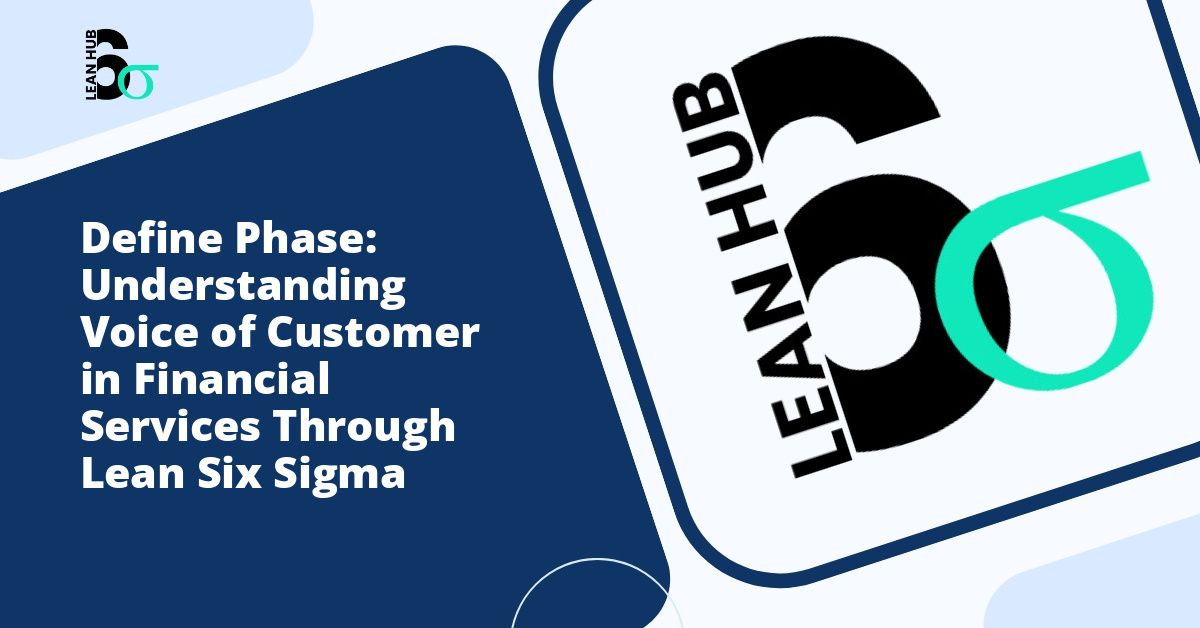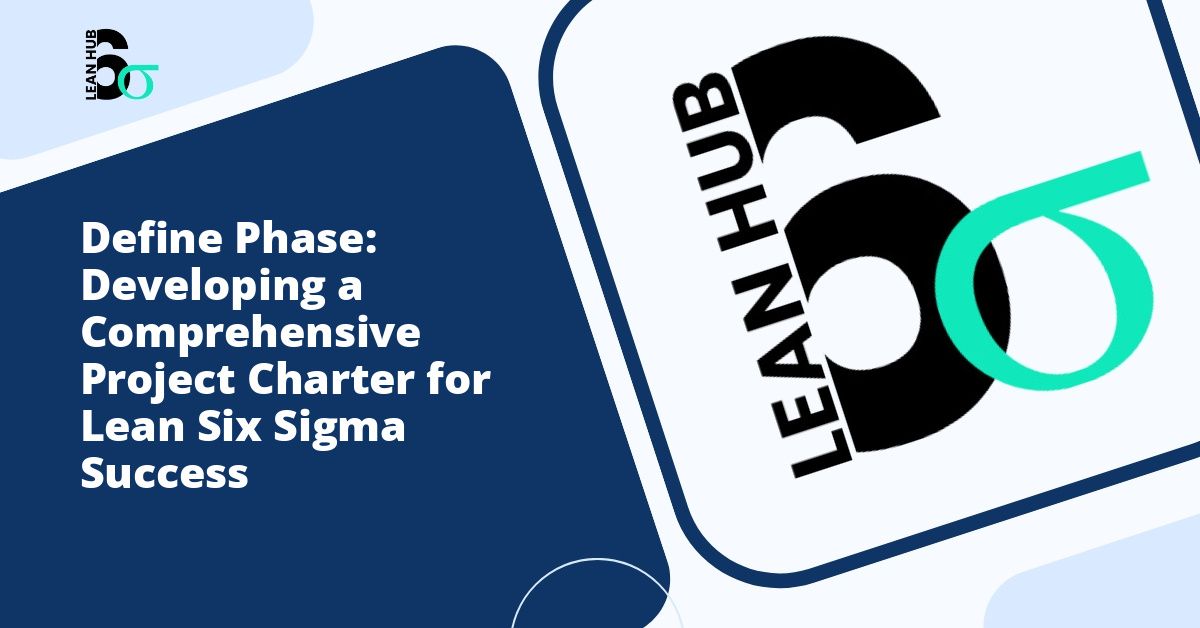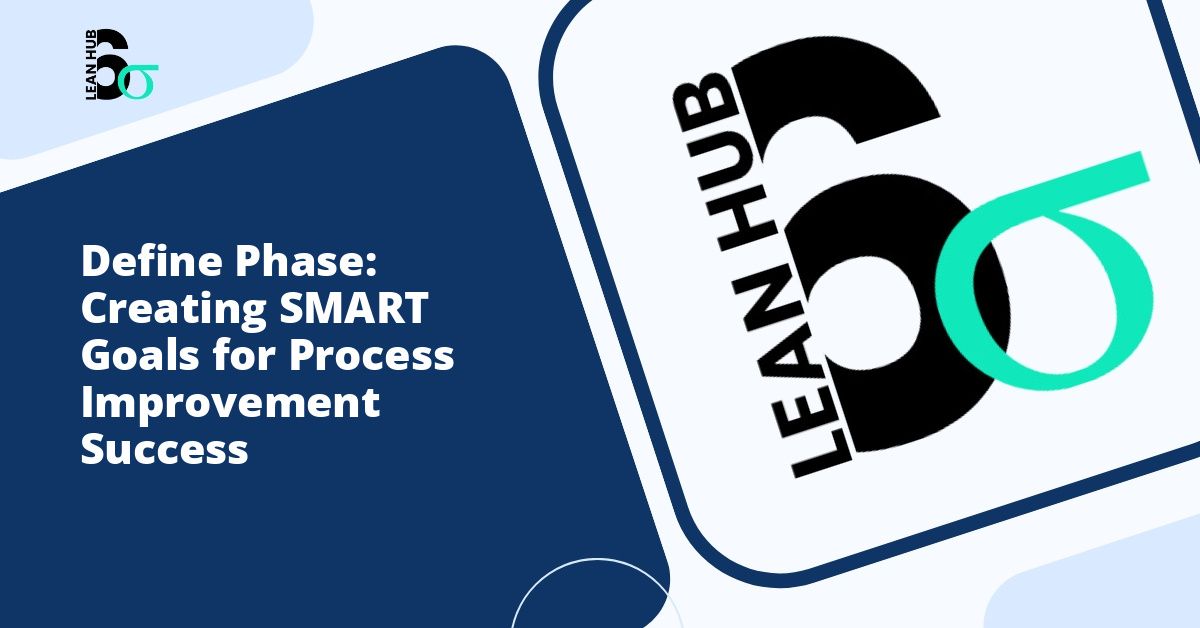In today’s competitive business environment, organizations continuously seek methodologies that enhance efficiency, reduce waste, and improve overall quality. Lean Six Sigma has emerged as one of the most powerful approaches to achieving these objectives. At the heart of this methodology lies the DMAIC framework, with the Define phase serving as the critical foundation for project success. This comprehensive guide explores the Define phase in detail, providing you with the knowledge needed to launch successful Lean Six Sigma initiatives in 2025.
Understanding Lean Six Sigma and Its Significance
Lean Six Sigma represents the integration of two powerful methodologies: Lean manufacturing principles focused on waste elimination and Six Sigma’s data-driven approach to quality improvement. This combination creates a robust framework that addresses both efficiency and quality concerns simultaneously. Organizations implementing lean six sigma typically experience significant improvements in customer satisfaction, operational efficiency, and bottom-line results.
The methodology follows the DMAIC cycle, which stands for Define, Measure, Analyze, Improve, and Control. Each phase builds upon the previous one, creating a structured approach to problem-solving and process improvement. The Define phase, being the first step, sets the trajectory for the entire project and determines whether subsequent efforts will yield meaningful results.
What Is the Define Phase?
The Define phase represents the initial stage of any Lean Six Sigma project where teams establish clear project boundaries, objectives, and success criteria. This phase answers fundamental questions about what problem needs solving, why it matters to the organization, and how success will be measured. Without a properly executed Define phase, projects risk scope creep, misaligned objectives, and wasted resources.
During this critical phase, project teams work collaboratively to document the current state, identify stakeholders, and create a roadmap for improvement. The Define phase typically consumes approximately 10-15% of the total project timeline but influences 100% of the project outcomes.
Key Components of the Define Phase
Project Charter Development
The project charter serves as the constitution for your Lean Six Sigma initiative. This document outlines the project scope, objectives, team members, timeline, and expected benefits. A well-crafted charter includes the business case justifying why resources should be allocated to this particular problem. It also identifies the project sponsor, typically a senior leader who provides strategic direction and removes organizational barriers.
The charter should clearly articulate the problem statement in quantifiable terms. Rather than stating “customer service is poor,” an effective problem statement might read “customer complaint resolution time averages 72 hours, exceeding our target of 24 hours by 200%.” This specificity enables teams to recognize phase completion criteria and measure progress objectively.
Voice of the Customer (VOC)
Understanding customer requirements forms the cornerstone of any improvement initiative. The Voice of the Customer process involves systematically collecting and analyzing customer feedback, expectations, and preferences. This information might come from surveys, interviews, focus groups, complaint data, or market research.
Teams translate qualitative customer feedback into quantifiable Critical to Quality (CTQ) characteristics. These CTQs become the measurable specifications that define project success from the customer’s perspective. For example, if customers express frustration with “slow delivery,” the team might translate this into a CTQ of “delivery within 48 hours for 95% of orders.”
SIPOC Diagram
The SIPOC diagram (Suppliers, Inputs, Process, Outputs, Customers) provides a high-level visualization of the process under investigation. This tool helps teams understand process boundaries and identify all relevant stakeholders. Creating a SIPOC diagram early in the Define phase prevents teams from diving too deeply into details before establishing proper context.
A SIPOC diagram maps out who provides inputs to the process, what those inputs are, the major process steps, what outputs the process generates, and who receives those outputs. This bird’s-eye view ensures that improvement efforts address the entire system rather than isolated components.
Stakeholder Analysis
Successful lean six sigma projects require active engagement from various stakeholders across the organization. Stakeholder analysis identifies everyone affected by or influencing the project, assesses their level of interest and influence, and develops appropriate engagement strategies.
Stakeholders might include process owners, frontline employees, customers, suppliers, senior management, and support functions like IT or finance. Understanding each stakeholder’s perspective, concerns, and expectations allows project teams to build support, anticipate resistance, and communicate effectively throughout the project lifecycle.
The Recognize Phase Connection
While not formally part of the traditional DMAIC framework, some organizations incorporate a recognize phase before the Define phase begins. This preliminary step involves identifying potential improvement opportunities through data analysis, strategic alignment reviews, and organizational assessment. The recognize phase helps organizations prioritize which problems warrant full Lean Six Sigma project investment.
During the recognize phase, leadership teams evaluate potential projects against criteria such as strategic alignment, financial impact, feasibility, and resource availability. This screening process ensures that Define phase efforts focus on initiatives with the highest potential return on investment.
Tools and Techniques for the Define Phase
Project Selection Matrix
Organizations often face multiple improvement opportunities simultaneously. A project selection matrix helps prioritize initiatives by scoring potential projects against weighted criteria. Common evaluation factors include expected financial benefits, alignment with strategic objectives, probability of success, resource requirements, and implementation timeline.
Goal Statement Development
The goal statement articulates the desired future state in specific, measurable terms. Effective goal statements follow the SMART framework: Specific, Measurable, Achievable, Relevant, and Time-bound. For example: “Reduce order processing time from 4 hours to 2 hours by December 31, 2025, resulting in annual savings of $250,000.”
Stakeholder Communication Plan
Communication planning during the Define phase establishes how information will flow throughout the project. This plan specifies what information different stakeholder groups need, how frequently they should receive updates, through which channels communication will occur, and who bears responsibility for each communication activity.
Common Pitfalls to Avoid
Even experienced practitioners sometimes stumble during the Define phase. One common mistake involves defining the problem too broadly, making it impossible to address within reasonable time and resource constraints. Conversely, defining the problem too narrowly might treat symptoms rather than root causes.
Another frequent error is insufficient stakeholder engagement early in the project. Teams that fail to secure buy-in during the Define phase often encounter resistance during implementation. Additionally, some teams rush through Define phase activities, eager to begin data collection and analysis, only to discover later that they’ve been measuring the wrong things.
Best Practices for Define Phase Success
Successful Define phase execution requires dedicated time and attention from qualified team members. Organizations should assign team members with appropriate process knowledge, analytical skills, and organizational credibility. The project sponsor should actively participate in Define phase activities, not simply approve documents.
Documentation created during the Define phase should be clear, concise, and accessible to all stakeholders. Avoid jargon and overly technical language that might alienate non-experts. Schedule regular reviews with the project sponsor and key stakeholders to ensure continued alignment as understanding evolves.
Finally, remain flexible during the Define phase. As teams gather information and engage stakeholders, initial assumptions may prove incorrect. The Define phase should be iterative, with teams refining their understanding until they achieve clarity and consensus.
Conclusion
The Define phase of lean six sigma projects establishes the foundation upon which all subsequent improvement activities build. By investing adequate time and resources during this critical first phase, organizations position themselves for project success. A well-executed Define phase creates clarity around objectives, builds stakeholder commitment, and establishes measurement systems that demonstrate value.
As we navigate the business challenges of 2025, the structured approach provided by Lean Six Sigma becomes increasingly valuable. Organizations that master the Define phase gain competitive advantage through improved project success rates, better resource allocation, and stronger alignment between improvement initiatives and strategic objectives. Whether you are new to Lean Six Sigma or an experienced practitioner, excellence in the Define phase remains essential for delivering sustainable results.








